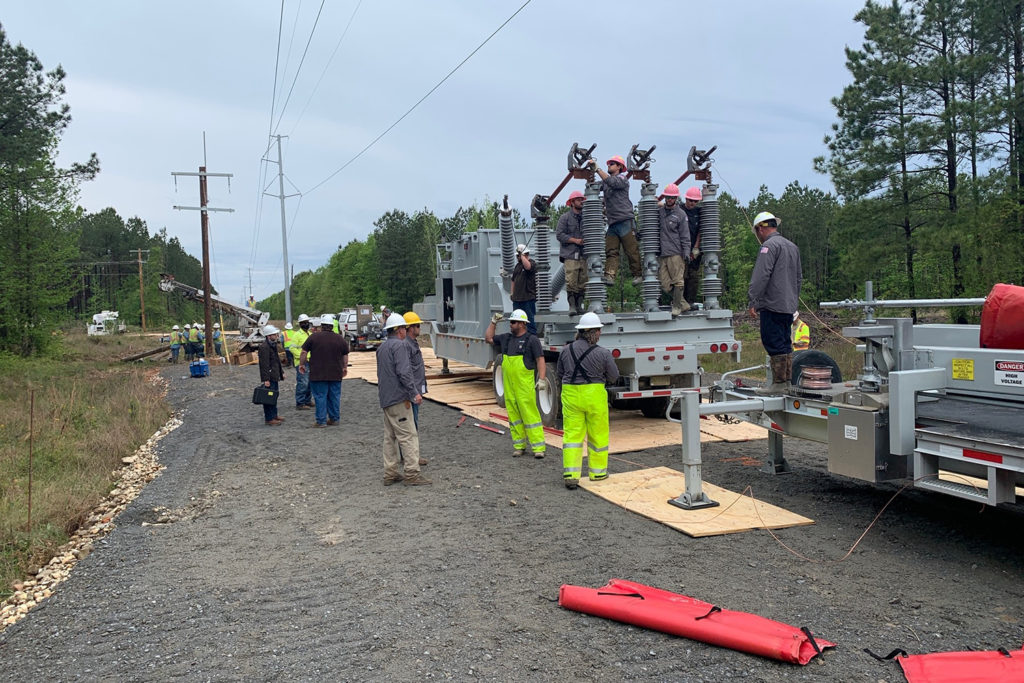
As April tornadoes ravaged the South, Arkansas co-ops rushed to assemble a mobile substation and make widespread repairs to restore power to tens of thousands of members.
Heavy rains and flooding caused a 21,000-meter outage to homes and businesses served by C&L Electric Cooperative Corp. on April 13, triggering a regional mutual aid response that eventually involved hundreds of lineworkers and construction crews.
All but one of the co-op’s 22 substations was knocked out of service.
The extent of the damage prompted a major mutual aid response, and visiting crews were spread out to reduce the threat of COVID-19 infection.
“The outages were among those reported by six Arkansas co-ops following the storms and more than 50,000 meters were affected,” said Rob Roedel, director of corporate communications for the Electric Cooperatives of Arkansas.
“We tailored a mutual aid plan to meet response needs while minimizing potential COVID-19 exposure for the crews. Wherever they were needed, crews worked in squads and maintained a safe distance from other groups working on their specific areas of expertise.”
Initial mutual aid efforts involved 80 lineworkers from co-ops unaffected by the rains and 65 workers from Arkansas Electric Cooperatives, Inc.
Damage across C&L Electric Cooperative’s service territory was widespread just as pandemic shutdowns had many members teleworking and in urgent need of power.
“More than 265 professional line crews worked 16 hours a day and did so until power was restored to our members that can receive service,” said Greg Smith, CEO of Star City-based C&L Electric. “We were in constant contact with our transmission provider to stress the vital need to restore the flow of power to our substations.”
Meanwhile, line crews and contractors replaced about 300 poles, Smith said. “Many of the impacted areas were challenging to repair due to terrain and other conditions, but crews constantly made progress.”

With most of the work completed April 19, a flooded substation near the Saline River left about 300 members still without power.
Co-op engineers and crews began installing a mobile substation that day as a temporary solution. After picking a location, crews raised about 60 three-phase distribution structures and strung nearly three miles of line in a day to reach the site.
Testing was completed and temporary fencing was in place within two days, and final connections to the mobile equipment and circuits were energized April 23. The mobile substation project, which normally would require a month to finish, was completed in just four days.
“I applaud the dedication of our professional line and right-of-way crews for always being willing to go above and beyond to assist our member cooperatives at all times and in all conditions,” said Joe Ritchie, director of utility services for AECI.
Derrill Holly is a staff writer at NRECA.
Related Content:
Read More on the electric co-op response to the COVID-19 Pandemic